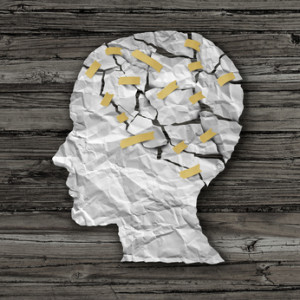The Vicious Spiral of Suicidality
A study published in the November 2016 issue of JAMA Psychiatry suggested that patients were at an increased risk of suicide during the three months immediately following their discharge. They were fifteen times more likely to commit suicide than similarly matched patients who were treated for non-mental health issues. Individuals without any outpatient care in the months before their hospitalization were at an even higher risk. Individuals diagnosed with depressive disorders were at the highest risk, followed by those with bipolar disorder and then schizophrenia.
The lead author of the study, Mark Olfson, was interviewed on the JAMA network about the study. He said one of the limitations of the study was it didn’t have the level of detail to get at why depression and depressive disorders were the highest short-term risk of suicide. However, he speculated that since one of the symptoms (diagnostic criteria) for depression was related to suicide, and many individuals are hospitalized because of suicide attempts or suicide risk, this is “probably what conveys their short-term risk of suicide following hospitalization discharge.” He added that effective approaches to suicide risk reduction should involve strengthening a patient’s connectedness, reducing social isolation, and engaging them in outpatient care. In his review of the study for Mad in America, Justin Karter quoted the study authors as saying:
These patterns suggest that complex psychopathologic diagnoses with prominent depressive features, especially among adults who are not strongly tied into a system of care, may pose a particularly high risk. As with many studies of completed suicide, however, the low absolute risk for suicide limits the predictive power of models based on clinical variables. These constraints highlight the critical challenge of predicting suicide among recently discharged inpatients based on readily discernible clinical characteristics.
The association of suicide risk and hospitalization has been evident in previous studies. For example, a 2005 study reported in the Archives of General Psychiatry, found there were two sharp peaks of suicide risk around psychiatric hospitalization. There were during the first week after admission and in the first week after discharge. The length of hospitalization was also a factor, with individuals receiving less than the median length of stay having a significantly higher risk. The study also confirmed previous reports that prior admission to a psychiatric hospital is also associated with a higher risk of suicide.
This study, to our knowledge, is the first to explore how suicide risk differs by diagnosis across the phase of psychiatric hospitalization. We find that affective disorders increased the risk for suicide the strongest across all phases of time since hospitalization compared with other diagnostic groups. We also find that affective and schizophrenia spectrum disorders tend to have a more intensive effect on the risk of suicide, whereas substance abuse disorders have a more prolonged effect on the risk of suicide.
In an article for the website, Speaking of Suicide, Stacey Freedenthal cited the recommendation by David Rudd, a nationally known suicide expert, who recommended initially seeing an individual at least twice in the week after discharge. The elevated risk of suicide after hospitalization was not necessarily related to a premature discharge. Referencing David Rudd, she said:
Instead, suicidal intent is fluid, impossible to predict from one moment to the next, let alone day-to-day. Of course, whatever led to hospitalization in the first place, whether a suicide attempt, mental illness, or some other crisis, places a person at higher risk than normal for suicide.
However, there was a 2014 study reported in Social Psychiatry and Psychiatric Epidemiology that found psychiatric admission in the previous year was highly associated with completed suicide. “Furthermore, even individuals who have been in contact with psychiatric treatment but who have not been admitted are at highly increased risk of suicide.” The authors said the relationship was one of association, rather than causation. “People with increasing levels of psychiatric contact are also more severely at risk of dying from suicide.”
An editorial in the same issue by Large and Ryan said that compared to those who had no psychiatric treatment in the previous year, those who received medication were 5.8 times the risk of suicide; those with at most outpatient psychiatric treatment had 8.2 times the risk; patients with emergency department contact without an admission had 27.9 times the risk; and admitted patients had 44.3 times the risk of suicide. These ratios were after controlling for other risk factors.
The strongest risk factors for suicide after discharge were: prior suicide attempts and depressive symptoms. Additional risk factors include: hopelessness, worthlessness, guilt and a family history of suicide. Large and Ryan said they believed it was likely that a proportion of individuals who suicide during or after an admission to hospital do so because of factors inherent in the hospitalization. They argued that such suicides should be considered as “nonsocomial”—acquired in a hospital.
There was a significant positive correlation between a PTSD diagnosis and suicidality in a study by Panagioti, Gooding, and Tarrier. Comorbid major depression was a compounding risk factor. The association of suicidality and PTSD persisted across “studies using different measures of suicidality, current and lifetime PTSD, psychiatric and nonpsychiatric samples, and PTSD populations exposed to different traumas.” Another study of national suicide rates in 25 European countries concluded that stigma towards persons with mental health problems could influence suicide rates within a country. The authors hypothesized that possible mechanisms could include stigma as a stressor, or social isolation as a result of stigma. Large and Ryan said:
There is now little doubt that suicide is associated with both stigma and trauma in the general community. It is therefore entirely plausible that the stigma and trauma inherent in (particularly involuntary) psychiatric treatment might, in already vulnerable individuals, contribute to some suicides.
So it seems there is a vicious spiral with suicidality. Together, depression and suicidality may lead to hospitalization, which itself is a risk factor for suicide. Hospitalization, particularly when it is involuntary, can lead to stigma and trauma, which exacerbates feelings of worthlessness and hopelessness—-themselves further risk factors in suicide.
How then do we help the chronically depressed and suicidal person? Perhaps the place to start is by not harming them any further. We need to recognize and minimize the potential for stigma and trauma from hospitalization. We need to address feelings of helplessness and worthlessness from very beginning of any contact with a depressed and suicidal person. In Cruel Compassion, as he reflected on how to avoid further harm with chronic mental patients, Thomas Szasz gave the following quote of C.S. Lewis that I think is helpful here.
Of all the tyrannies a tyranny sincerely exercised for the good of its victim may be the most oppressive. . . . To be “cured” against one’s will and cured of states which we may not regard as disease is to be put on a level with those who have not yet reached the age of reason or those who never will; to be classed with infants, imbeciles, and domestic animals. . . . For if crime and disease are to be regarded as the same thing, it follows that any state of mind which our masters choose to call “disease” can be treated as a crime and compulsorily cured. . . .Even if the treatment is painful, even if it is life-long, even if it is fatal, that will be only a regrettable accident; the intention was purely therapeutic.
Szasz went on to add:
To help the unwanted Other, we must therefore first relinquish the quest to classify, cure and control him. Having done so, we can try to help him the same way we would try to help any person we respect—asking what he wants and, if his request is acceptable, helping him to attain his goal or accept some compromise.




